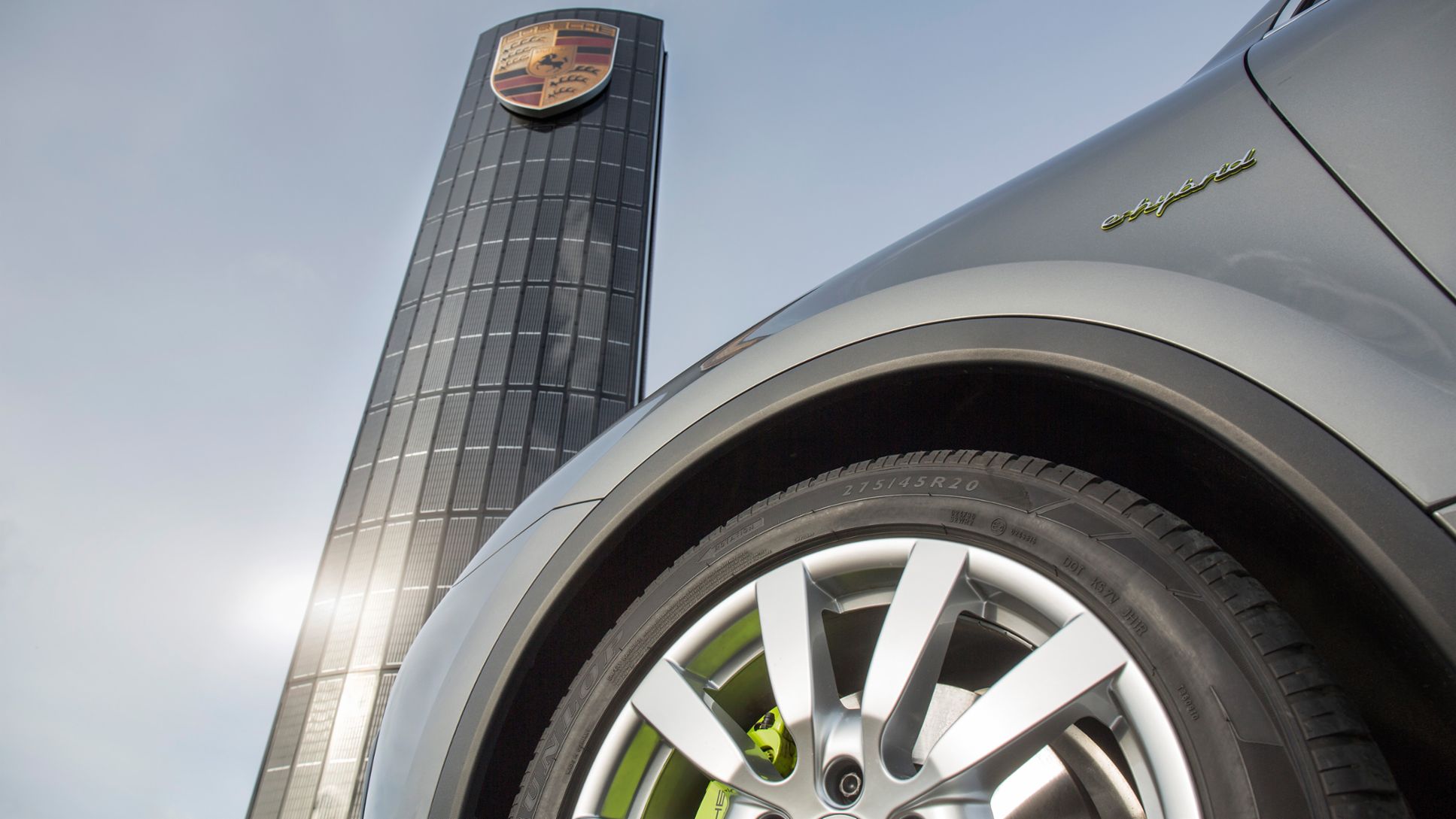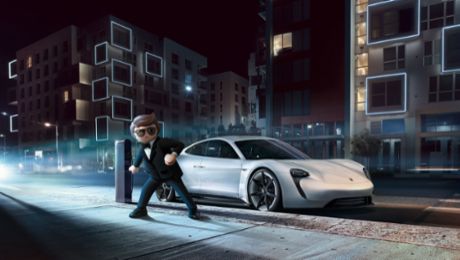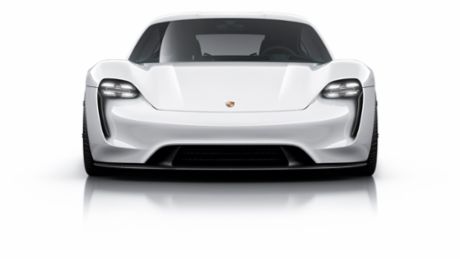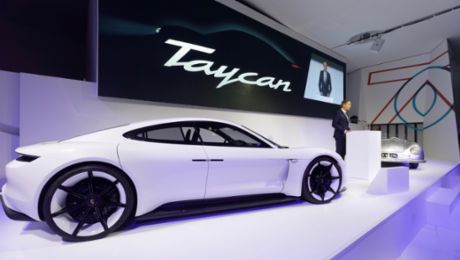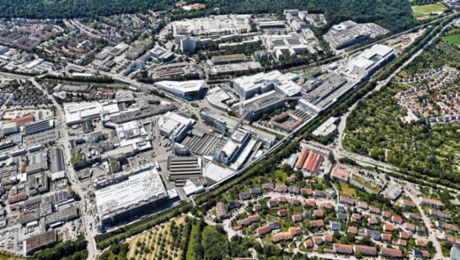The steel structure located at the technology park in the Adlershof section of Berlin weighs 37 tonnes and is 25 metres high. Its convex facade consisting of 7,776 solar cells can generate up to 30,000 kilowatt-hours of electricity per year. The pylon has a total surface area of approximately 270 square metres and would be able to cover the entire electricity requirement of the Porsche Centre in Berlin-Adlershof when it opens in the spring of 2017. Visitors to the centre will also be able to use the pylon to “fill up” with free electricity from Porsche.
Dr Jens Puttfarcken, Chairman of the Executive Board of Porsche Deutschland GmbH, says the pylon demonstrates Porsche’s “clear commitment to electric mobility and stands as a symbol of sustainable investment that will help conserve resources: Porsche is systematically addressing the challenges associated with electric mobility.”
Mission E: first completely battery-powered Porsche
With three plug-in hybrid models, Porsche is an electric mobility pioneer among premium manufacturers. Back in September 2015, Porsche presented the first completely battery-powered Porsche model at the IAA motor show in the form of the Mission E concept study. The vehicle will go into production at the end of the decade. Porsche is investing around €1 billion in its production locations in order to complete the associated project, and a total of 1,000 new jobs will be created at company headquarters in Zuffenhausen alone.
The photovoltaic pylon also sends a clear signal in terms of the establishment of a charging infrastructure for electric vehicles. Such infrastructure, says Puttfarcken, “is a key factor for the long-term success of electric mobility in Germany”.
